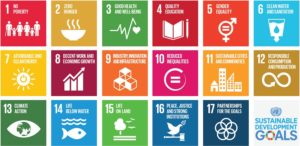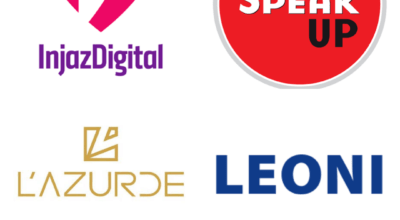Egypt recently held its hybrid launch event as the first country in the MENA region to participate in the Closing the Gender Gap Accelerator. We’re here to tell you why it’s relevant and what it hopes to achieve.
With the slowly increasing visibility of women in positions of power, and gender equality becoming a more mainstream topic – both online and in-person – it’s easy to assume that circumstances have improved for women in Egypt.
Nonetheless, now is not the time for complacency. There is still plenty of work to do. In 2019, the World Economic Forum (WEF) announced that if we are to continue to implement change at the rate we are now, we are still 99.5 years away from achieving gender equality.
Looking at that sobering figure alone, it’s clear why the Egyptian government is beginning to prioritize gender equality. However, that’s far from the true extent of the problem. Let’s take a closer look…

Photo Via: USAID
The State of Gender Equality in Egypt, and Why it’s Important
The WEF identified the MENA region specifically as that with the lowest score of gender equality. Assuming the current rate of progress in the region, it will take 150 years to achieve gender equality.
According to both USAID and the World Economic Forum in 2015, Egypt was ranked amongst the lowest 10 countries in the world for gender equality. Moreover, in 2014, The Organization for Economic Cooperation and Development (OECD) classified Egypt as ‘very high’ in gender discrimination according to their Social Institutions and Gender Index. Egypt was categorized as such along with many other countries in Africa and the Middle East. These countries were classed as such following an investigation of metrics like legislation, practices, and attitudes that restrict women’s rights and opportunities.
Whether we are aware of it or not, this gender gap is seriously inhibiting Egypt’s development. The International Monetary Fund calculated that if Egypt raised labor participation amongst women to the same rate as men, the GDP would increase by 39%.

Photo Via: Aga Khan Development Network
These statistics have instigated a wave of reform in Egypt directed towards tackling such issues of gender inequality. The WEF has recommended that such reform should focus on four main areas: health, politics, education, and economy.
The most enduring gender gap is economic
Although gendered gaps in health and education are slowly decreasing, this positive change is unfortunately not being reflected in economic or professional spheres. In fact, in 2020, the Rand Corporation published research showing that despite rates of completion and achievement in education being much higher amongst women than men, the employment rate for young women remains very low.
Unfortunately, this study predicted that female economic empowerment will only deteriorate. This projection is based on the information that fields previously dominated by women, such as retail and manufacturing, are those which are increasingly automated. Simultaneously, there are very few women trained in the emerging fields that job opportunities are predicted to be concentrated in the future. For instance, only 12% of those involved in ‘Cloud Computing,’ 15% of those in Engineering, and 26% of those in Data and AI are women.

Photo Via: New York Times
These statistics indicate that in the forthcoming years, women will be considered “less-employable” due to the jobs and sectors for which they have been trained. This obviously only spells further trouble for women as they continue their fight for inclusion into the labor force, and will continue to widen the enduring economic divide between the sexes.
Addressing the Problem Through the Gender Gap Accelerator
The “Gender Gap Accelerator” is one part of the WEF’s “Shaping the Future of the New Economy and Society Platform.” The Accelerator program structure is offered by the WEF to countries around the world aiming to address gender inequality. It’s intended to take advantage of the uncertainty of the ongoing pandemic to create positive change. The program has four main objectives within participating nations:
- Hardwire gender parity in the post-COVID-19 world of work
- Close gender gaps in remuneration (money paid for work or service) between and within sectors
- Enable women’s participation in the labor force
- Advance more women into leadership positions
The WEF plans to instigate this through a multi-pronged approach, which includes researching and creating an individualized 3-year action plan adapted to each participating country, creating a global platform for nations to share knowledge, and working with major companies to ensure quantifiable commitments to increase women’s participation in the workforce.

Rania Al-Mashat. Photo Via: Prisma Reports
How does this apply to Egypt and Who is Currently Involved?
In 2019, the Minister for International Co-operation, Rania Al-Mashat, signed a letter of intent to bridge the gender gap in Egypt. The National Council for women was then selected as a collaborator for this project.
By August 2020, The Ministry of International Co-Operation launched the multi-stakeholder platform spearheaded by major players such as Cairo International Bank, Qalaa Holdings, Travco International, and Delta Investment Holdings. These companies are currently leading conversations with over 100 participants surrounding topics such as their corporate policies, hiring practices, and resources available to female employees. In dedicating time to these conversations, such employers are hoping to reform prevailing discriminatory attitudes towards women in the workplace, which has hindered our ability to achieve equality.

Elected President of Egypt’s National Council for Women, Maya Morsy. Photo Via: Egypt Today (File Photo)
The 3-year Plan
The first step in joining the Gender Gap Accelerator includes the researching and creation of a 3-year plan tailored towards targeting and addressing the most prominent issues unique to each nation. According to Egypt Today, this 3-year plan has been broken down into 10 ‘pillars’ that aim to address the economic issues faced by women in the Egyptian workforce:
- More representation of women on company boards
- The government will reform policies relating to early child and elderly care
- Issue and enforce codes of conduct surrounding sexual harassment in the workplace
- Provide women with training and opportunities to join the STEM sector
- Company-to-company mentorships, coupled with women’s leadership and mentorship programs
- Implement gender equality models and empowerment principles
- Raise financial awareness by delivering training programs on financial literacy, whilst encouraging women to open their own bank accounts
- Raise the profile of women in leadership positions
- Co-operate with National Wages Council to close the gender pay gap
- Harness digital marketing to raise the profile of women entrepreneurs and female-led startups
By identifying the most pressing problems within Egyptian society, the WEF has created actionable steps for companies and legislators to drastically improve the lives of women.
What are we aiming for?
Egypt’s participation in the Gender Gap Accelerator is thought to be only one aspect of the National Strategy for the Empowerment of Egyptian Women in 2030, initially approved in 2017. This strategy is committed to addressing and reducing all forms of abuse faced by women across Egypt and aims to shift the values and beliefs that motivate them.
Moreover, following the December 2020 report on sustainability on the State Information Service website, Egypt’s participation in the Gender Gap Accelerator is only a small part of its focus on development. In the article, they announced their commitment to 34 projects, worth 3.3 billion in total, aimed at the achievement of gender equality. These are amongst numerous other investments in the improvement of health, infrastructure, education, and clean energy and water. These investments are intended to closely align with the UN’s declared Sustainable Development Goals – as adopted in 2015.

UN Sustainable Development Goals. Photo Via: Haus von Eden (Federal Govn.)
Finally, the Egyptian government has voiced its intention to implement regulations that will create a constructive and supportive working environment for women.
Although the bold commitment to improving the lives of women around the nation is certainly positive, it will likely be a challenge to effectively implement all these pivotal changes. As a result, there remains an individual responsibility to be more considerate about the experiences of women in our everyday lives. The structures that the government is trying to improve and correct rely heavily on public opinion. It falls to everyone to instigate change within our own communities that will support the work of initiatives like the Gender Gap Accelerator.



























